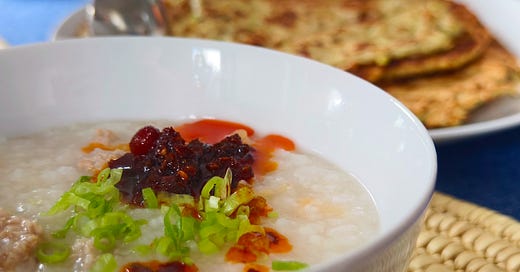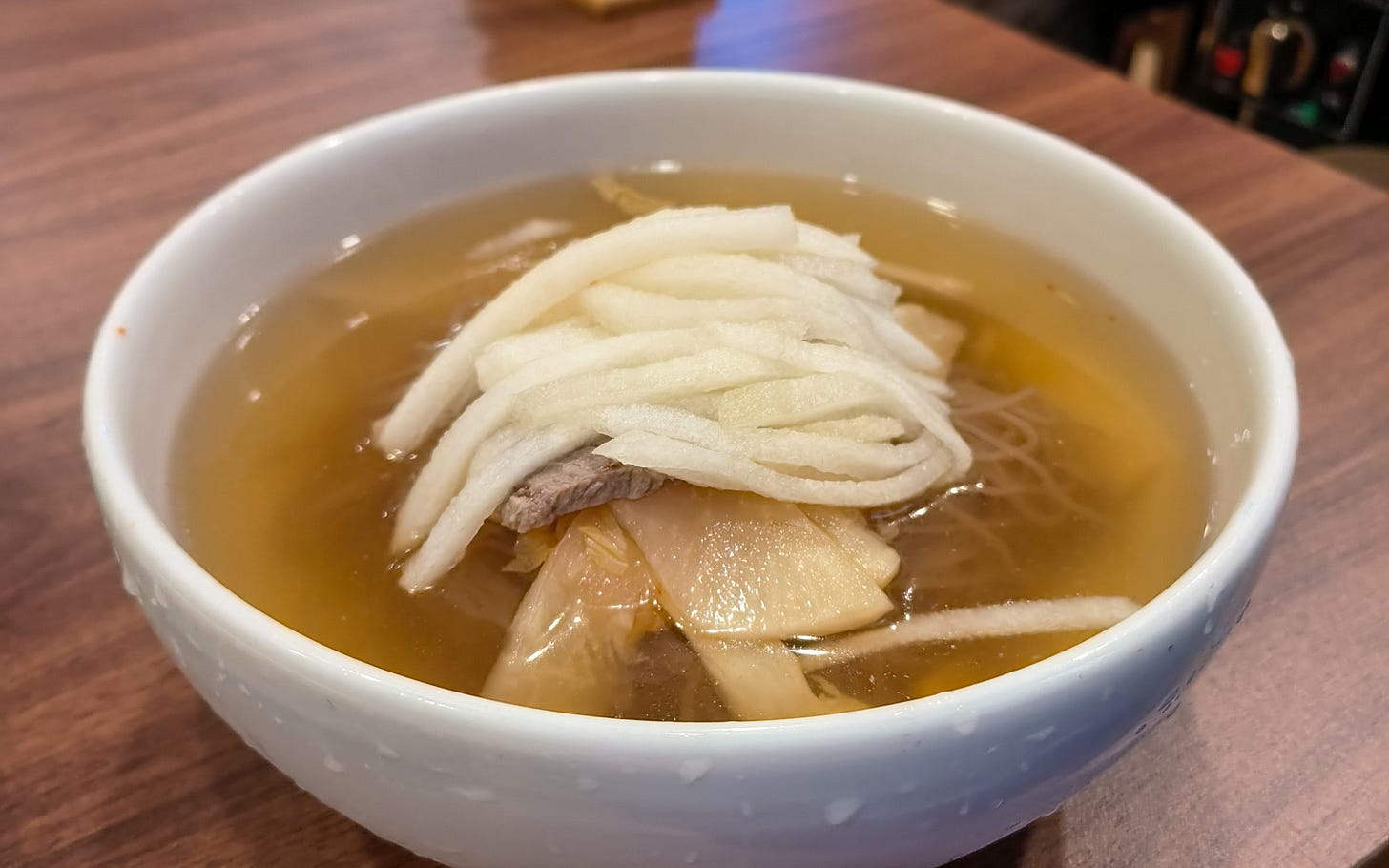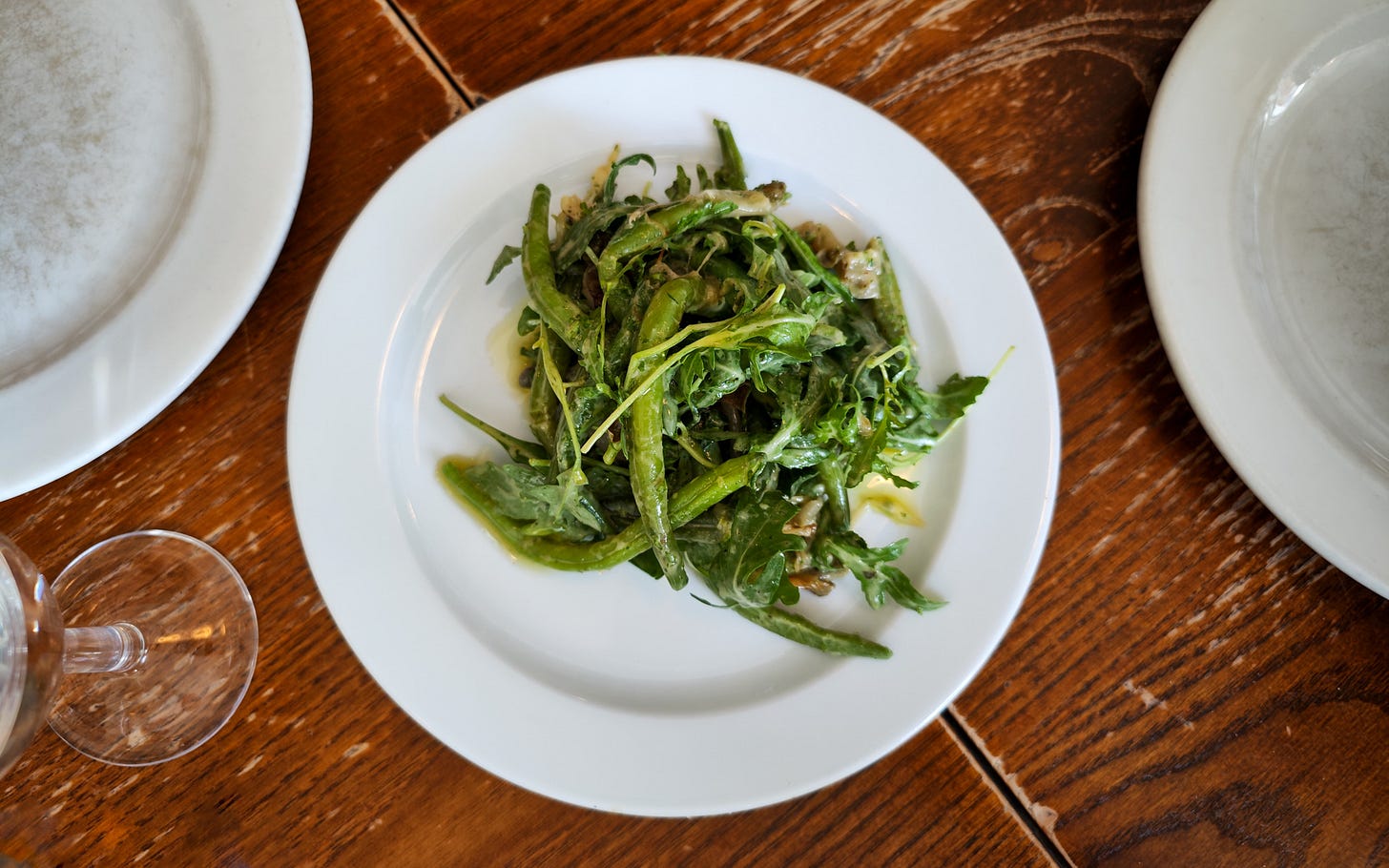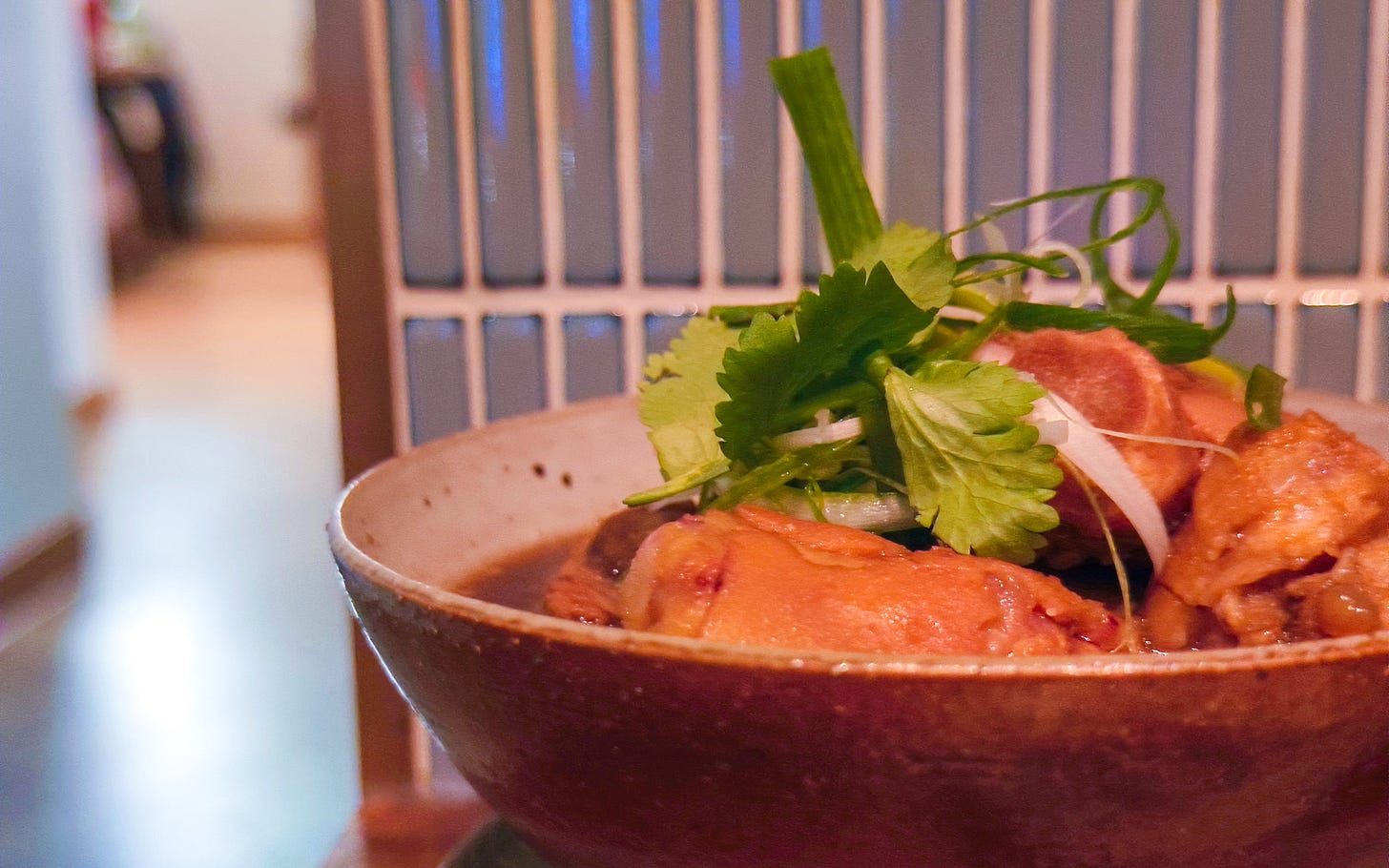It’s a running joke between my partner and I that almost every argument we’ve ever had has been sparked by food. What we’re eating, who’s cooking it, and why did you slice the green beans like that?
Of course, nine times out of ten we’re not really arguing about the cooking. It’s work, or money, or the cashmere jumper that accidentally made its way into the washing machine. Food is simply the spark that ignites the flame, ever-present in our life together and so ever a risk for disagreement.
Except.
The one food argument that really is about what we eat comes down to how bland it could or should be. Putting the lie to the old joke about Brits never seasoning their food, it's my Chinese-American other half who wants to eat ascetically, while I’m accused of lacking appreciation for the plainer things in life.
Charitable man that I am, I’ll present things in Vivian’s terms. For her, one’s diet is all about balance. The hot and the cold, the chewy and the crunchy, the flavourful and the not. It’s a view that sits somewhere between personal preference and traditional Chinese culinary principle, which gives her just enough ammunition to turn things into a culture war.
Here I’m cast as the uncivilised English brute, limited by my strong palate, unable to appreciate the refined subtleties of a dish that tastes of next to nothing. “Too much flavour!” she cries as we cook together, while I resist the urge to return for another run at the spice cupboard.
Perhaps she’s not wrong. I’ve always suspected that my greatest weakness as a cook is a tendency to over-salt my food; I maintain a generous collection of mustards and hot sauces for any occasion; and the dish that challenged me the most on a recent trip to South Korea was nothing more than a cold noodle soup I found almost unbearably bland.
I do like punchy flavours and I won’t apologise for it. One of my fondest food memories is a Brick Lane salt beef bagel with such a violent hit of mustard that it left me quietly crying in the street; I’ve been chasing that high ever since.
It’s not that I don’t appreciate the simple stuff. I’m that boring sort of London foodie that counts St. John as their favourite spot in the city, a restaurant hyped for its nose-to-tail ethos but really defined by a committed minimalism in ingredient lists. It’s the sort of place that can make a green salad sing, bitter leaves elevated by cutting vinegar acidity and pungent mustard wallop, delivering a flavour they only describe as “the neaugh factor”. Simple, yes. Subtle, no.
Our flavour feud is usually kicked off by congee. One of Vivian’s classic comfort foods, she was genuinely a bit apologetic when we started dating, warning me I probably wouldn’t like her “boring” congee. She typically makes the rice porridge with few additions or enhancements - throwing a few spinach leaves in is about as much sprucing up as it gets - and correctly judged I might find it plain.
Which isn’t to say that I’m encouraged to make my own modifications. Congee is a regular fixture in the Liu-Preston household, but just as regular is the look of disdain I receive for topping mine with a sprinkle of sesame oil or a spoonful of chilli crisp. “Philistine”, she seems to say with nothing more than a roll of her eyes, presumably wondering what she ever saw in a man who can’t properly savour a bowl of flavourless rice gunk.
It’s not just congee though - and, in fairness, it’s not just her. A recent visit to new Islington spot Hainan House turned this into a more public spat. Alongside perfectly poached poussin and chilli-drenched quail eggs we ordered a bowl of soy-braised pig trotters. Jiggly, gelatinous chunks of skin and sinew arrived barely clinging to the bone in what I thought would be a pungent soy sauce broth, but instead turned out to be mild, delicate, far deeper in colour than in flavour.
Much as I love the spirit of eating everything off an animal, it’s fair to say that trotters are something I’m still working on. I have a sort of academic appreciation of the chewy, slimy, crunchy gnawing they bring to the table, but it would be a step too far to say I really enjoy eating them. This, for me, is made all the more difficult by such an underplayed preparation. A heavy-hitting sauce or seasoning might go some way to distract from the fact that you’re slurping on the skin where a pig’s toe used to be; without it the reality is rather hard to escape.
At the end of what was a much better meal than I’ve made it sound we had a quick chat with the owner, Sunny Wu. After complimenting the “bravery” of leading with trotters on a compact London menu, Vivian jumped at the chance to dob me in for struggling with the stripped-back stock. I’m not the only one, we were told, with others having suggested that the dish could benefit from being punchier. But that’s not how they make it back home, and this was one concession to the London palate that Wu seems reluctant to make.
Perhaps this really is as simple as an East meets West divide. Much like arguments over warm drinking water and the apparent health risks of having ginger tea before bed, there may be no common ground to find here, our tastes firmly separated by virtue of having parents from half a world apart.
But perhaps there’s hope yet. This Sunday morning, less than 48 hours after naming and shaming me at Hainan House, Vivian once again made congee. But this time it wasn’t so simple. Whether it was boredom, cravings, or the needs of her hangover, she instead made a congee dotted with not only shavings of dried scallops, but tender chunks of pink pork mince bobbing around the bowl. More remarkable still, by the time I reached the table I saw proof positive that she accepts me for who I am, brutish taste buds and all: a bright red teaspoon’s worth of Lao Gan Ma, glistening in the heart of my not-so-plain congee.
Perhaps I’m still a philistine - but for one rainy Sunday morning, that was okay.








